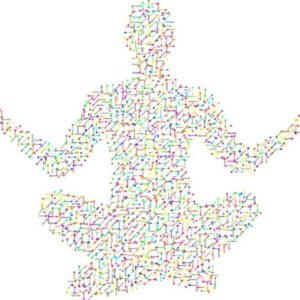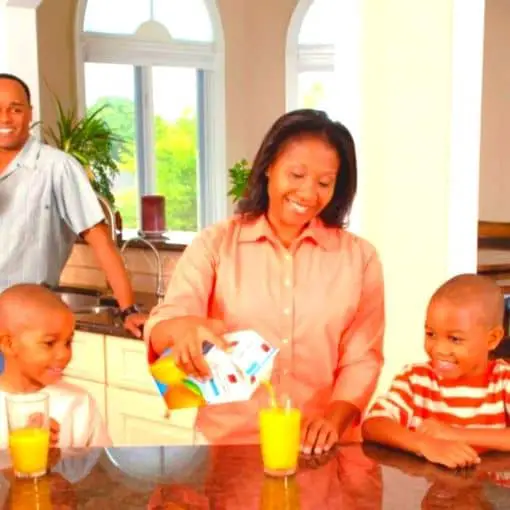Have you ever looked at your brother or sister and wondered how two people from the same parents could be so distinctly different? The answer is woven into the very fabric of our being: Sibling DNA.
Although siblings share the same biological parents, the variations in personality, appearance, and life choices can be striking.
From the unique combination and variation of genes that each new child inherits to the distinct environmental influences that mold us. Understanding the nuances of Sibling DNA is a journey into the heart of human biology and identity.
This piece delves into the compelling dynamics that explain why brothers and sisters, despite having the same family background and upbringing, mature into distinctly different individuals—each a unique fusion of common lineage and personal journey.
For instance, consider a family with two children raised under the same roof by the same parents.
One child might feel a calling to serve the community, pursuing a path of altruism and possibly becoming a minister, dedicating their life to guiding and helping others.
The other sibling, however, might stray down a divergent road, perhaps lured into a life of crime, despite receiving the same parental guidance and moral education.
This contrast serves as a profound example of how complex genetic and environmental factors interact to shape each person’s unique identity and destiny.
Unlock the Mysteries of Your DNA Test Results: “Deciphering the Codes: How to Read DNA Test Results.” [Begin Exploring Your Ancestral Heritage Now – Click Here!]
Exploring the Intricacies of Sibling DNA: Decoding the Blueprint of Life
When siblings share the same parents, their genetic narratives begin with the same authors, but the stories that unfold are as distinct as the individuals themselves.
DNA, the fundamental blueprint of our existence, provides a rich tapestry of instructions for building and sustaining life, with each sibling receiving a version that is unique to them.
The Genetic Mosaic: Sibling DNA and Ancestral Legacies
In the realm of Sibling DNA, the double helix structure serves as a molecular alphabet—an intricate sequence that is never replicated in the same way twice.
As these sequences are transmitted from parent to child, they carry with them more than just the blueprint for physical appearance.
They carry the legacies, the histories, and the genetic memories of our ancestors.
The way these genetic scripts are combined and expressed results in a complex mosaic of traits, making each sibling a unique expression of their familial line.
Sibling DNA: From Genes to Generations
Understanding the fundamental makeup of DNA is crucial when exploring the question:
- When siblings share the same parents, why do they grow up to be different?
- Each strand of DNA is a chronological archive of who we are.
- Harboring variations that lead to different physical, emotional, and psychological outcomes.
- While one child might inherit a proclivity for artistic talents, their sibling may be predisposed to analytical thinking.
- Underscoring the role of the genetic lottery in personal development.
The Enigma of Expression: How Sibling DNA Varies
It’s not just about the genes siblings inherit; it’s also about which genes are turned on or off—this is known as gene expression.
The same genetic code can behave differently, resulting in variations in how siblings look, act, and think.
It is this phenomenon that contributes significantly to the differences in siblings’ personalities and dispositions, even when they are brought up under the same roof.
Unlocking the Secrets of Sibling DNA
As we delve deeper into the secrets held within our DNA, we find answers to age-old questions about family resemblance and sibling divergence.
Modern science allows us to peer into the genetic journey that begins at conception, illustrating the profound impact of heredity.
The study of Sibling DNA not only enhances our understanding of genetics but also illuminates the uniqueness of each human being.
By appreciating the complexities and subtleties of DNA, we begin to unravel the narrative of each individual—how siblings with the same genetic starting point can travel along such divergent paths.
This exploration is not just a scientific endeavor; it’s a quest to understand the essence of our individuality and the bonds that tie us to our family yet make us distinctly ourselves.

Understanding the Role of Chromosomes in Sibling DNA
The mosaic that is Sibling DNA owes much of its complexity to the role of chromosomes, those microscopic structures that are the repositories of our genetic material.
Understanding chromosomes is crucial when unraveling the subtle differences between siblings.
Chromosomes: The Architects of Heredity
At the core of every cell, chromosomes exist as the carriers of DNA, orchestrating the symphony of life.
In humans, 46 chromosomes pair up to create the genetic foundation that will shape everything from the color of our eyes to our susceptibility to certain diseases.
Each pair is a harmonious blend of maternal and paternal chromosomes, contributing to the distinct genetic signature of each sibling.
The Pivotal 23rd Pair: Sibling DNA and Gender Determination
- Among these pairs, the 23rd set stands out as the arbiter of biological sex.
- The combination of XX chromosomes typically creates a female identity, whereas an XY pair leads to a male identity.
- This pivotal determination is made at the moment of conception, where the father’s contribution of either an X or a Y chromosome melds with the mother’s X chromosome.
The Genetic Lottery: Chromosomal Contribution to Sibling Variance
- This genetic lottery, where each parent provides 23 chromosomes, is where the magic and mystery of Sibling DNA come to life.
- Although the process of inheritance follows the laws of biology, the outcome—much like a shuffled deck of cards—holds endless possibilities for variation.
- Each sibling inherits a different mix, leading to the extraordinary range of differences we observe in families.
Decoding Sibling DNA: Beyond the 23rd Chromosome
While the 23rd chromosome pair is often spotlighted for its role in sex determination, the other 22 pairs contribute equally to the vast array of traits siblings inherit.
It’s within these threads of DNA that the unique blend of features, talents, and characteristics emerge, making each sibling a distinct individual, despite their shared origins.
The Chromosomal Tapestry: Weaving Together the Traits of Siblings
- As we delve into the intricacies of chromosomes, we gain insight into the fascinating narrative of Sibling DNA.
- Each chromosome carries with it the potential for myriad expressions of genetic traits, resulting in siblings that are both familiar and unique.
- The dance of chromosomes during conception is a foundational aspect of our individuality.
- And by understanding it, we can better appreciate the diversity within our own families.
The Origin of Individuality: The Creation of a Zygote
The zygote stands at the fascinating juncture where life begins and Sibling DNA starts to diverge.
It’s the biological genesis from which a person’s genetic makeup is established.
The Zygote: Foundation of Genetic Diversity
A zygote is not merely a cell; it’s a genetic powerhouse where the contributions from both parents intermingle to form a new, unique individual.
With 46 chromosomes, half from the mother and half from the father, the zygote becomes the blueprint for an entire human being.
This union marks the first step in a complex process that leads to the development of a multifaceted organism.
Siblings and Zygotes: The Lottery of DNA
While siblings may share the same parents, each zygote they originate from is distinct.
This is due to the random assortment of chromosomes during fertilization, ensuring that, barring identical twins, each sibling has a different genetic profile.
The Sibling DNA each begins with is as unique as a fingerprint, even though it comes from the same parental sources.
The Journey from Zygote to Birth
From this solitary cell, the zygote, an extraordinary process unfolds as it divides and specializes, ultimately forming the complex systems that make up the human body.
Every step of the process, from a single zygote to a newborn is a marvel of nature, with the initial genetic combination influencing each one.
Zygotes: The Sibling DNA Narrative Begins
Every individual’s story starts as a zygote, and it is here that the roots of genetic differences among siblings take hold.
Understanding the creation of the zygote is fundamental to grasping how Sibling DNA varies.
And why can siblings, despite their shared origins, grow up with such diverse characteristics?
The Zygote’s Impact on Sibling DNA
The creation of a zygote is a pivotal moment in defining the Sibling DNA narrative.
This cell is the bedrock upon which the vast diversity of human traits and potential is built.
It’s a testament to the intricacy and beauty of life that every zygote while following the same biological principles, leads to the birth of an individual unlike any other.
Understanding the Complexity of Sibling DNA
The Genetic Tapestry of Sibling DNA
- At the heart of sibling differences lies the complex tapestry of Sibling DNA.
- This intricate genetic fabric is woven from the threads of parental genes, with each sibling inheriting a pattern distinct from the other.
- The result is a mosaic brimming with individuality—each sibling a unique artwork of genetic combination and expression.
Unraveling the Mystery of Sibling Variance
- It’s a marvel of human biology that children of the same parents can exhibit a startling range of differences.
- This variance is rooted in the basic mechanics of heredity, where genes from the mother and father are mixed in novel ways with each conception.
- While siblings receive genes from the same two people, the way these genes are assorted and expressed can lead to profound differences in appearance, personality, and health.
The Science Behind Differing Sibling Traits
- Science provides us with the lens to understand how Sibling DNA factors into the equation of individuality.
- The random assortment of genes during the formation of gametes means that each child inherits a different set of genetic instructions.
- This lottery of inheritance is what can make one sibling tall and another short, or one musically inclined and another athletically gifted.
From Shared Origins to Individual Paths
- Though the starting line is the same, the paths diverge quickly for siblings.
- As they grow and develop, the differences in their Sibling DNA interact with varied environmental influences, further accentuating their uniqueness.
- It’s this dance between nature and nurture that sculpts siblings into distinct individuals, each with its own set of strengths, weaknesses, and idiosyncrasies.
The Puzzling Dynamics of Sibling DNA
- The dynamics of Sibling DNA are as puzzling as they are fascinating.
- It brings into question the age-old debate of nature versus nurture and how each contributes to the development of an individual.
- Understanding the role of genetic inheritance among siblings is not just a journey through biology but a deep dive into the essence of what makes each person unique.
Painting a Picture of Sibling DNA Uniqueness
Crafting the Genetic Palette: An Artistic Take on Sibling DNA
The genetic information that weaves through our cells can be envisioned as a vibrant palette of colors, each hue symbolizing the diverse strands of DNA gifted to us by our parents.
In the realm of Sibling DNA, this visual metaphor helps us grasp the concept of genetic inheritance more vividly.
The Art of Inheritance: Mixing the Parental Colors
Let’s paint a picture of inheritance: a child’s genetic makeup can be likened to a canvas onto which the parents dab their respective colors.
A father contributes shades like:
- Black
- Blue
- Blue
- Brown
While a mother bestows colors such as:
- Pink
- Purple
- Red
- Green
The fascinating process of recombination—nature’s artistry—determines which of these colors will blend to form the child’s unique genetic signature.
Sibling DNA: Unique Genetic Canvases from the Same Palette
In this colorful analogy, one sibling may emerge with a cool-toned composition, harboring:
- Black and Blue from the father’s side,
- Coupled with Pink and Purple from the mother’s genetic spectrum.
- Another sibling might display a warmer portrait,
- Combining Yellow and Brown paternal colors with Red and Green maternal tones.
The Diverse Outcomes of Genetic Recombination
The resulting portraits—no two are ever the same—underscore the incredible diversity of Sibling DNA.
This genetic recombination ensures that each sibling while drawing from the same family palette, will express a distinct set of characteristics.
It’s this intricate and random blending that leads to each sibling having their own unique genetic expression, much like an artist who creates distinct pieces of art from the same set of colors.
Understanding the Rich Tapestry of Sibling Genetics
Visualizing Sibling DNA in this manner not only makes the concept more accessible but also highlights the richness and complexity inherent in our genetic tapestry.
It emphasizes that the complex and haphazard interaction of genetic information is what causes the differences and similarities between siblings.
Which makes it possible for a wide range of physical traits, personalities, and even health conditions.
Genetic Variation Chart for Sibling Differences
Your Father’s Colors (DNA)
Your Mother’s Colors (DNA)
You Inherited 50% DNA From Your Father
Your Sibling Inherited 50% DNA From Your Father
You Inherited 50% DNA From Your Mother
Your Sibling Inherited 50% DNA From Your Mother
Your Colors (DNA)
Your Sibling Colors (DNA)
Nurturing Nature: The Environmental Brushstrokes on the Canvas of Sibling DNA
The Subtle and Profound Influence of Environment on Sibling Development
- Our DNA, inherited from our parents, establishes our basic identity.
- Yet, it’s the environment that refines and alters us, unpredictably shaping our unique qualities.
- This dynamic interaction defines the environmental impact on Sibling DNA.
Crafting Individuality: Environmental Factors as Sculptors of Identity
Consider siblings as two trees growing from the same seedbed but swayed by different winds.
They share the same genetic soil—identical in composition—yet the conditions they face are:
- Sunlight
- Rain
- Nutrients
- Gardener’s care
Chisel their growth into unique forms. This metaphor illustrates how siblings, who start with identical genetic blueprints, become distinct individuals as a result of their environment.
Life’s Varied Palette: Experiences That Color Sibling Personalities Differently
- The experiences siblings encounter as they navigate through life—their triumphs and challenges.
- Their friendships and rivalries, their education, and their adventures.
- Act like strokes of different brushes, painting varied landscapes on the canvas of their beings.
- It’s through this complex layering of experiences that the environment significantly influences Sibling DNA.
- Crafting personalities and destinies that diverge as they mature.
Parental Influence: The Gardener’s Role in Shaping the Saplings
The role of parents cannot be overstated in the environmental shaping of siblings.
- Each word of encouragement or critique.
- Each display of affection or discipline is like the gardener’s subtle trimming or robust pruning.
- Directing the growth in subtle ways.
Yet, despite identical upbringing efforts, siblings can react and evolve differently, illustrating the nuanced effect of the environment on Sibling DNA.
The Interplay of Nature and Nurture: A Symphony of Sibling Differences
Understanding the environmental impact on Sibling DNA requires a recognition of the symphonic interplay between nature and nurture.
It is a delicate dance where genetic predispositions meet the formative experiences of life, leading to the multifaceted individuals we see in siblings.
These differences are not just a testament to the diversity of life but also to the adaptability and resilience of the human spirit as it interacts with the world around it.
Conclusion
In conclusion, siblings have genetic origins in common, but the distribution of DNA they inherit from their parents can be as varied as colors in a spectrum; they are not exact replicas.
Each sibling receives a mix of genetic material that’s uniquely theirs. Furthermore, environmental influences work like an artist’s hand, guiding each sibling down their own path.
The interaction between our inherited genes and the environments in which we develop is delicate and complex.
It weaves a rich tapestry of individuality and personal evolution. As a result, siblings can develop a wide range of distinct traits and make different life choices.
This is the case even for those who have grown up side by side, bonded by the closest of familial ties.
Frequently Asked Questions (FAQ)
- How much do environmental factors affect sibling differences? Environmental factors can have a substantial impact on sibling differences, influencing personality, interests, and even life outcomes. While genetics provide the initial blueprint, the environment shapes the final product.
- Can siblings with the same DNA have different health outcomes? Yes, due to the influence of environmental factors and the process of epigenetic changes, siblings with the same DNA can have different health outcomes based on lifestyle, diet, exposure to toxins, and other external factors.
- Do identical twins share the same DNA but still have different personalities? Identical twins have the same DNA, but their personalities can differ due to environmental influences and personal experiences that lead to unique psychological development.
- How does the birth order affect siblings? Birth order can influence siblings’ roles, expectations, and behavior patterns within a family. Firstborns may have different experiences and pressures compared to middle children or the youngest, which can lead to differences in personality and behavior.
- Can a change in environment alter the expression of a sibling’s DNA? While the DNA sequence itself doesn’t change, environmental factors can influence gene expression through epigenetic mechanisms such as DNA methylation and histone modification, effectively turning genes on or off.








